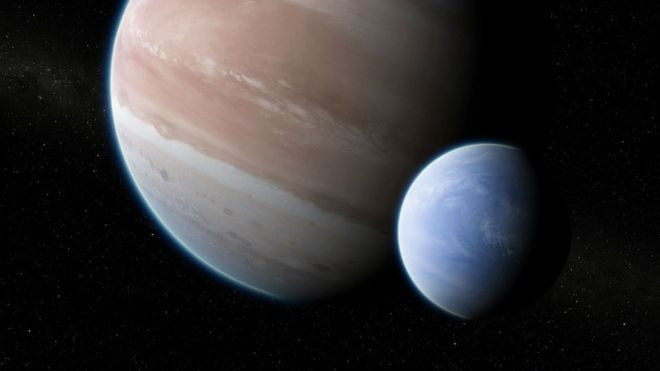6 Exomoons Discovered In Deep Space, Study Reveals

KEY POINTS
- Researchers discovered six exomoons orbiting exoplanets
- They used NASA's Kepler Space Telescope to conduct their study
- The gravitational effect of the exomoons on the exoplanets was detected by the researchers
A team of researchers claimed to have discovered six exomoons orbiting distant exoplanets. They were able to detect the cosmic bodies using data from NASA’s retired space telescope.
The study was carried out by astronomers from the Western University in Canada. It was submitted for publication through ArXiv.org.
The researchers carried out their study by analyzing the data collected by NASA’s Kepler Space Telescope, which was officially launched in 2009. This space telescope, which was deactivated in 2018, was used to look for exoplanets in neighboring star systems.
As the researchers were going through Kepler’s data, they discovered traces of exomoons, which are natural satellites orbiting planets in another solar system. The discovery has been considered a rare find since even though thousands of exoplanets were already discovered, exomoons still remain elusive.
According to the researchers, they discovered a total of six exomoons orbiting different exoplanets. Based on the data collected by Kepler, these exoplanets and their orbiting exomoons are located about 200 to 3,000 light-years from Earth’s neighborhood.
The researchers noted that they were not able to directly spot the exomoons in Kepler’s data because they are too small to be detected as they transited their host exoplanets. However, the researchers were still able to confirm the presence of the exomoons through the traces they left in their surroundings.
“We can say these six new systems are completely consistent with exomoons: their masses and orbits are such that they would be stable; they would be small enough that their own transits wouldn’t be seen; and they reproduce the pattern of [transit timing variations] seen throughout the entire Kepler data set,” Chris Fox, the lead author of the study, explained in a statement.
As noted by the researchers, they were able to detect disturbances in the timing of the transits of the exoplanets. Usually, exoplanets that do not have natural satellites have fixed transit intervals.
However, the gravitational influence of an orbiting cosmic object could cause variations in the timing of the transits.
“These exomoon candidates are so small that they can’t be seen from their own transits,” Paul Wiegert, the co-author of the study, explained. “Rather, their presence is given away by their gravitational influence on their parent planet.”
© Copyright IBTimes 2024. All rights reserved.




















